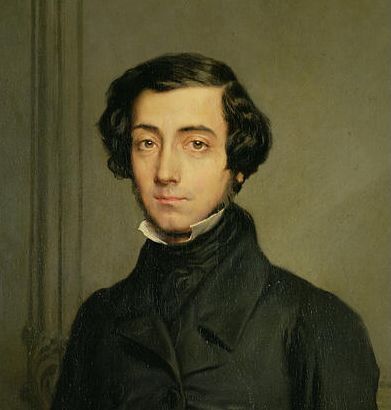By Byron Ramirez, Ph.D. and Bo Yang, Ph.D.
•
April 23, 2025
When we describe leaders, we often cite the importance of their ability to influence others. For decades scholars have focused their work on studying and describing how this capacity to influence works and why it tends to elicit a positive response from people, who are inspired to follow the leader’s vision. We have read about that mystifying ability to persuade others and guide them towards a common purpose. However, when analyzing the leader there is another aspect we ought to also consider - where does their power originate from, and is this power considered legitimate? What these questions intend to imply is that when we analyze the interactions of leaders and their followers, we should contemplate how their relationship is built, and moreover, how the power of the leader is used to shape those relationships. Let us first discuss what power is and why it is important. Power in its general sense is the capacity to influence, lead, dominate, or impact the actions of others. The German sociologist, Max Weber referred to power as the capacity to create a desired outcome within a social relationship. As such, power enables the leader to influence and lead the actions of people. Legitimate power is often referred to as power that the person derives from formal position or office held in the organization's hierarchy of authority. And it is this notion of authority that helps legitimatize power in the eyes of the follower. For instance, a manager has legitimate power over their subordinates, allowing them to assign tasks. Teachers possess legitimate power in the classroom, enabling them to assign grades and set learning objectives. We can then surmise that legitimate power is based on the authority granted by a position or title. And individuals will comply with requests or decisions made by the person with authority because they recognize the authority of the person holding the position. However, unlike authority, which implies legitimacy, power can be exercised illegitimately. As history shows us, there are plenty of examples where power did not originate simply from a place of authority and legitimacy, and instead flowed from coercion. Joseph Stalin and his Great Terror campaign certainly comes to mind. And although Stalin did have a position of “authority”, much of his power and influence were coercive and deceptive in nature. In fact, Stalin had used his political positions throughout his life to “remove” opponents while bolstering his image in the pursuit of greater personal power. According to biographer Robert Service (2005), Stalin took pleasure in degrading and humiliating people and kept even close associates in a state of "unrelieved fear”. Of course, there are other instances in which coercive power is used to elicit compliance. A more common example of coercive power is a manager who uses threats of demotion or termination to get employees to comply. And so, when we consider the influence a leader (manager) has, we ought to consider the very nature and source of their power. Do people follow the leader because they are truly inspired by the leader’s vision? Or do they follow because they have no other choice? Managers who threaten the job security of others to ensure compliance, leaders who exploit their positions for personal gain, or individuals who rise through favoritism rather than merit – are manifestations of illegitimate power. Regardless of context, illegitimate power tends to erode morale, limit creativity, and foster toxic environments where people operate out of fear rather than purpose. Illegitimate power wields influence without moral justification, ethical values, or the consent of those affected. And because this form of power often derives from manipulation, coercion, intimidation, or exploitation rather than genuine respect for people, it undermines trust, breeds fear, and corrodes the ethical foundations of organizations and communities. Coercive leaders who use threats, punishment, or psychological pressure to force compliance, may certainly achieve short-term results, but at a significant long-term cost. Coercion strips individuals of their autonomy and creates environments of resentment and disengagement. People may comply outwardly, but internally they may withdraw, resist, or leave. Furthermore, coercive leadership discourages open dialogue and constructive feedback, which are essential for innovation, growth, and continuous improvement. When fear becomes the primary motivator, organizations and societies become stagnant, rigid, and vulnerable to collapse. And this brings us to an important question – what does legitimate power look like? On this issue, Peter Drucker offers unique insights. In his first book, The End of Economic Man (1939), Drucker discussed the issue of legitimate power (although he did not use the term legitimate power, but rather the justification of authority). Drucker believed that the power of rulers must possess legitimacy, a tradition that has continued in Western civilization since Plato and Aristotle. In Drucker’s view, legitimate power involves a functional relationship between power, social beliefs, and social realities: does power commit to social beliefs? At the same time, can it effectively organize social reality based on that commitment to create order? In his books, Concept of the Corporation (1946) and The New Society (1950), Drucker began to use both terms legitimate power and leadership simultaneously. Drucker would go on to argue that a government that commits to the well-being of its people can be said to have legitimate power. Over time, Drucker shifted his analysis of legitimate power from the political realm to social organizations. According to Drucker, if the management of a social organization (such as a company) claims that its principal purpose is to benefit employees, this particular focus would constitute an abuse of power. Instead, Drucker argued that the primary mission of an economic organization is to always achieve economic performance, thereby contributing to society – and this is in fact, the source of the legitimacy of corporate management's power. Of course, a company is also a community. For employees, management undoubtedly holds power and must exercise it. However, the legitimacy of management’s power does not come from the commitment to benefit employees, but rather from two functions: 1. Through institutional design and innovation, shaping effective community communication, thereby enabling middle-level and lower-level employees to gain an overall vision of the organization. This allows employees to have a managerial attitude. 2. By setting clear and reasonable performance standards, prompting employees to take responsibility and achieve success through effective work. If management can perform these functions within the organization, then it is considered to exercise legitimate power. In Drucker's early works, exercising legitimate power was almost synonymous with leadership. Drucker was not enthusiastic about discussing the personal style or charm of leaders, and he was even less inclined to associate leadership with a mystifying ability to persuade others, especially if such persuasion appealed to propaganda, indoctrination, or mental manipulation. For Drucker, discussing leadership primarily meant enabling power to function effectively. Therefore, leadership is not a matter of individual leaders' techniques and styles, but rather a matter of the responsibility and function of power itself. We can surmise from these functions that legitimate power aligns with the goals, beliefs, and aspirations of the people being led. Leaders who wield this kind of power do not need to resort to threats or manipulation. Instead, they inspire, guide, and collaborate. Their authority is accepted because it is seen as fair, earned, and beneficial to the collective. It is vital to foster leaders who operate from legitimate power—power that is granted through trust, expertise, shared values, and recognized authority. Legitimate power is grounded in the formal authority granted to a manager through their role within an organization, but its true strength comes from how that authority is exercised. Unlike coercive power, legitimate power is perceived as rightful and appropriate because it is based on clear expectations, mutual respect, and established structures. When managers consistently act with fairness, integrity, and transparency, their authority is more likely to be accepted and trusted by their teams. This creates a healthy power dynamic where employees feel secure in leadership decisions, understand their roles, and are motivated to contribute toward shared goals. Managers can build legitimate power by aligning their actions with the organization's values and demonstrating competence, consistency, and accountability. For instance, making decisions that reflect the organization’s mission and treating all team members equitably strengthens a manager’s credibility. Communication is also key—leaders who listen actively, provide clear direction, and explain the rationale behind their decisions foster trust and buy-in. Investing in personal growth, staying informed, and modeling a strong work ethic all reinforce the perception that a manager has earned their position and is acting in the best interest of the team and the organization. When managers lead through legitimate power, the benefits to the organization are substantial. Teams are more engaged, morale improves, and collaboration increases because people trust the leadership and feel aligned with the organization’s purpose. This creates a positive feedback loop where employees are more likely to take initiative, innovate, and remain committed, reducing turnover and boosting overall performance. In essence, legitimate power forms the foundation of a sustainable leadership culture—one that empowers individuals, strengthens organizational integrity, and drives long-term success. Developing leaders who influence through legitimate power requires a shift in how we define and nurture leadership. It involves prioritizing emotional intelligence, ethical reasoning, transparency, and empathy. Such leaders model integrity and authenticity, aligning their decisions with shared values and long-term visions. They create environments where people feel valued, heard, and empowered. In turn, this fosters loyalty, engagement, and a strong sense of purpose. To build healthier workplaces and more just societies, we must champion leaders who embody legitimate power: those who influence not by fear, but by vision, credibility, and alignment with shared values. This approach not only promotes ethical leadership but also cultivates trust, innovation, and collective well-being. References Drucker, P. F. (1946). Concept of the corporation. New York: John Day Company Drucker, P. F. (1939). The end of economic man: A study of the new totalitarianism. New York: John Day Company Drucker, P. F. (1950). The new society: The anatomy of the industrial order. New York: Harper Service, R. (2005). Stalin: a biography. Belknap Press of Harvard University Press. Weber, M. (1965). Politics as a vocation. Fortress Press.





